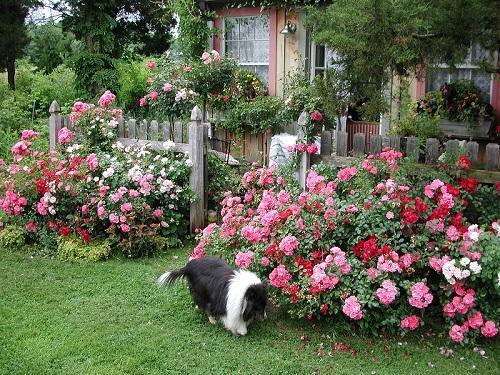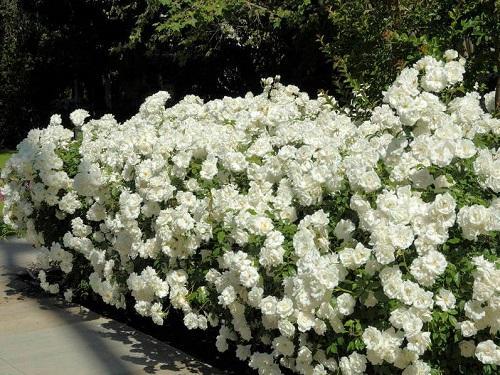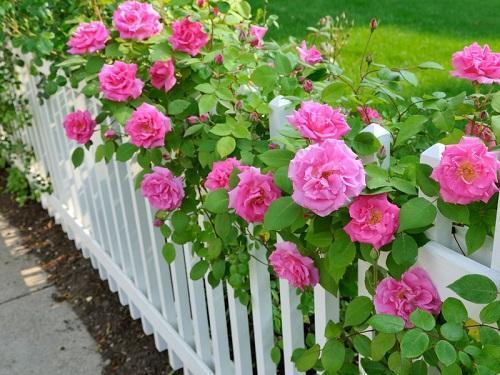Groundcover roses blooming all summer
Ground cover roses, which bloom all summer, have deservedly earned the recognition and love of flower growers. After all, such a shrub will not only create a unique flowerbed, with its help it is easy and simple to arrange alleys, gazebos, curbs. Groundcover roses can even strengthen the soil in places where erosion develops and will not allow the soil to wash out on the beds located on the slope during the rainy season.

general characteristics
In general, ground cover roses are divided into 5 types:
- large ones with shoots that spread (bush width more than 1.5 m, height up to 50 cm);
- small with shoots that spread (bush width up to 1.5 m, height about 30 cm);
- large with branching shoots (the width of the bush exceeds 1.5 m, the height is more than 1 m);
- small with branching shoots (bush width 1.5 cm, height up to 1 m);
- large shrubs that grow straight.

All five types of ground cover roses common characteristics are inherent:
- The presence of a large bush with many side shoots, while the width of the rose is greater than its height.
- Shrubs bloom for a long time and very abundantly.
- Along with a large number of inflorescences, there is also a lot of green mass (leaves).
- Accelerated growth of side shoots.
- They are not afraid of freezing, the bushes are resistant to diseases.
- They do not require special care and careful "haircuts".
Landing features

When choosing a place for planting ground cover roses, it should be borne in mind that they belong to light-loving plants, so shady flower beds are not the best place for them. Here it is unlikely that it will be possible to achieve long flowering from roses. However, direct sunlight is also dangerous for this species, as it will cause wilting.
The most suitable place will be the west or southeast of the site located on an elevation, while when planting, young bushes should be laid at an angle.
You also need to take into account that ground cover roses do not like high humidity and acidity of the soil, as well as sandy soil.
The best time for planting roses - autumn, while the shoots need to be slightly shortened. But if winters are usually too cold, for the safety of the bush it is better to plant it in the spring. When planting in spring, pruning the seedling will be more "tough": on a strong shoot you need to leave 2 buds, on a weak one - 1 bud.
To facilitate the further care of roses, before planting them, the site should be cleared of weeds, and after planting, the rows should be mulched with sawdust or film.
You can plant ground cover roses either in a row (the depth of the row should exceed the length of the root system by 20 cm), or individually (hole diameter - 50 cm, depth - 70 cm).
When planting, sprinkle the soil in parts and water each portion of the earth a little, tamp the top layer of soil, water the planted bush well again and huddle. When a 5-centimeter young shoot grows, clear the rose from the ground and cover it with mulch.
Care rules

When caring for ground cover roses, it is enough to follow a few simple rules:
- Watering... Carry out strictly in the morning when the topsoil dries out by 4 cm.
- Fertilizer... Roses are fed only during the growing season (Cytovit, Agricola) and in the fall (potash fertilizers). When flowering, it is enough to pick off faded roses.
- Pruning... If, when planting, there is a sufficient distance between the bushes (so that they do not intertwine), ground cover roses do not need pruning.
- Frost protection... To prevent the shrubs from freezing in the winter with little snow, they should be additionally covered. Low-growing roses can be covered with spruce branches or a film can be pulled over a wire frame. Tall bushes are also covered, but before that the shoots are bent down, and under them spruce branches are also tweaked so that the rose does not lie on the ground.